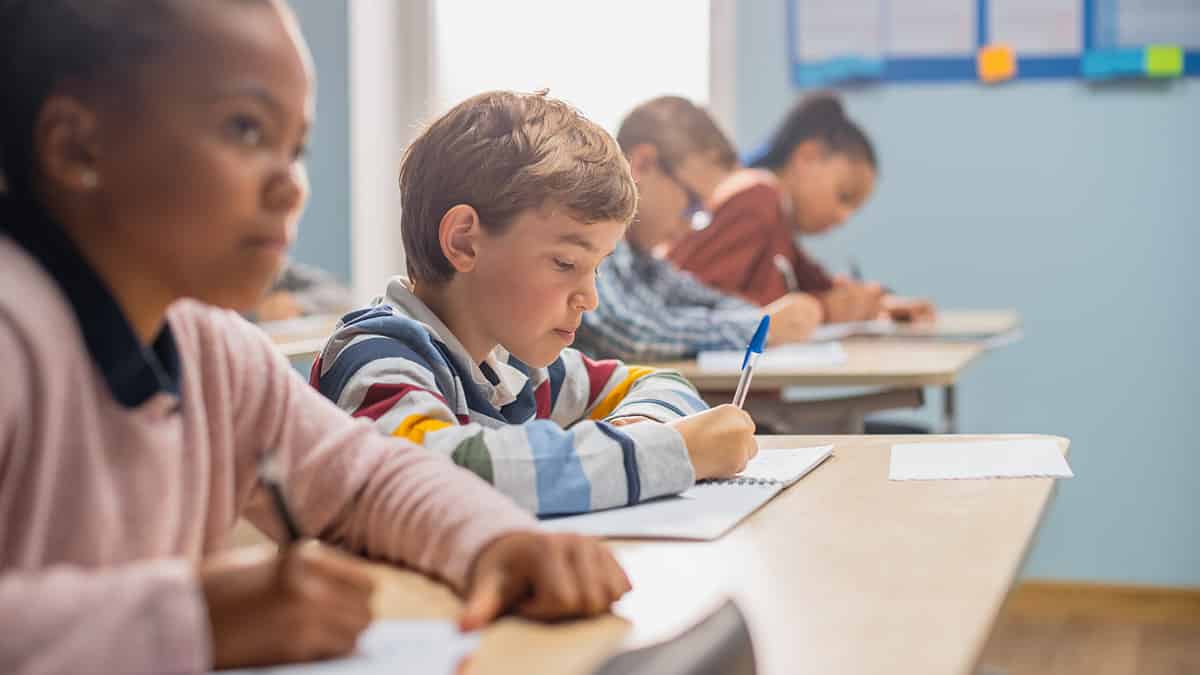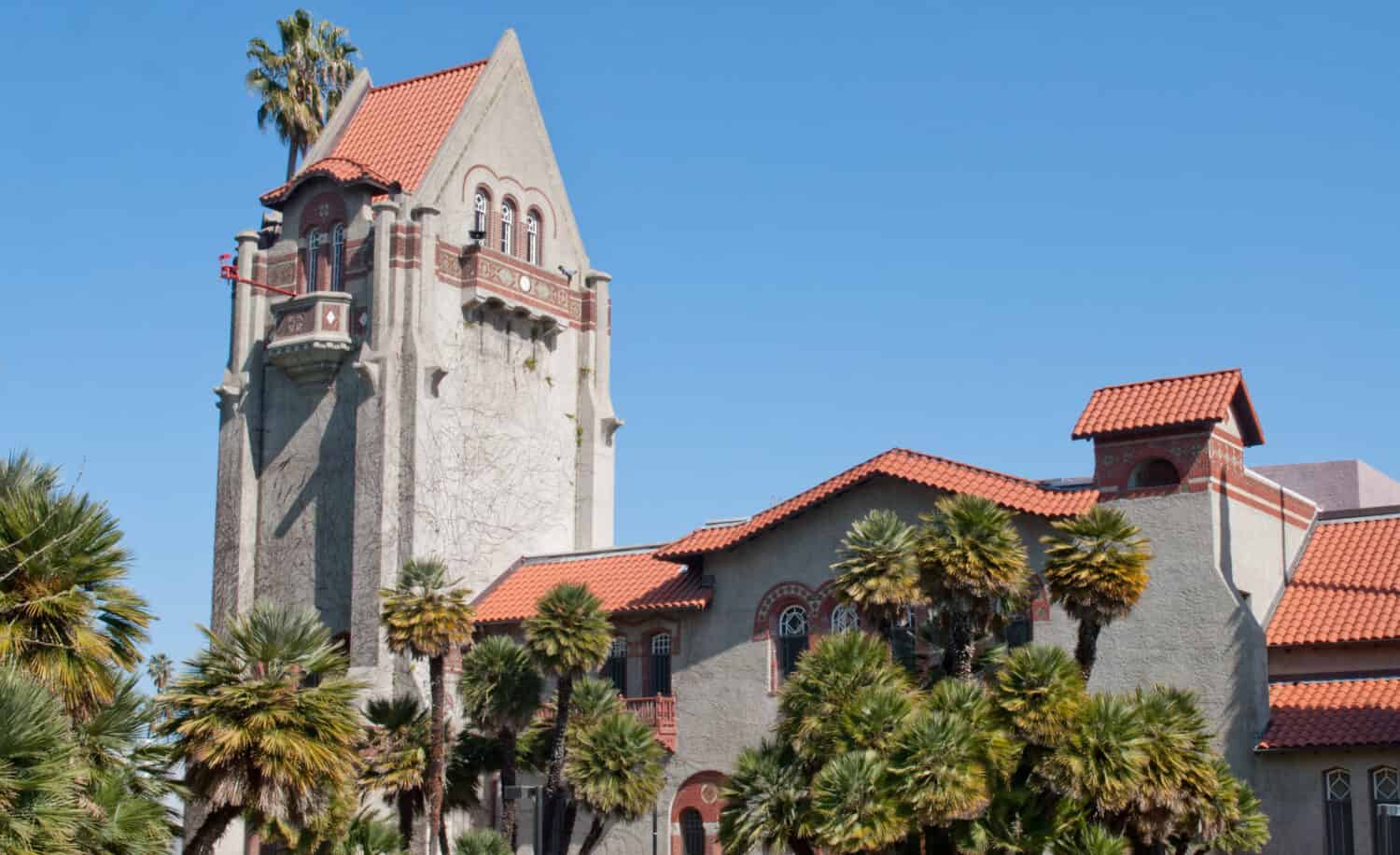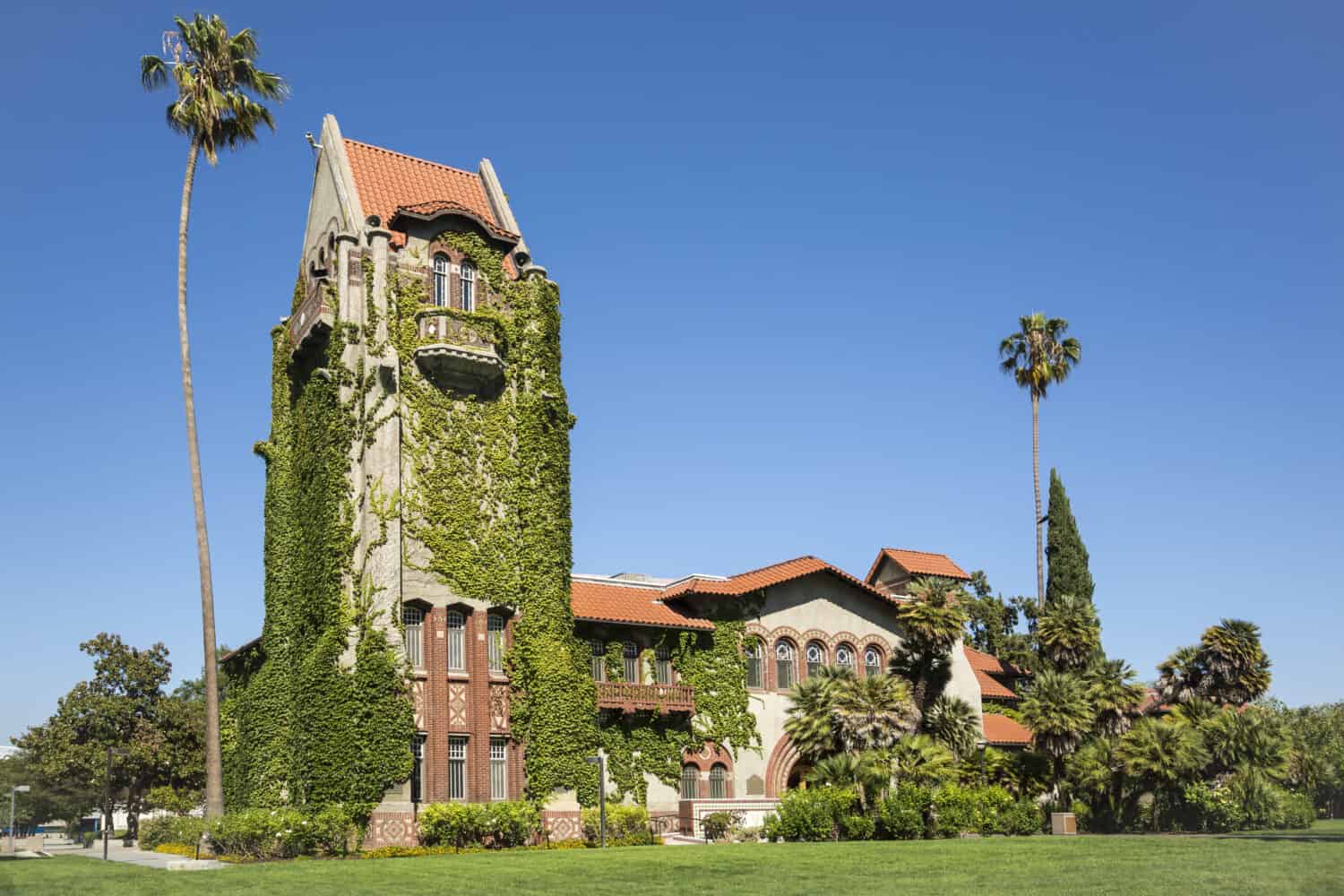Children are our future, and we want the best for them from the day they are born until they go through school and eventually become adults and grow into their own. As parents, we spend hours pouring through internet searches to find the best grade schools, middle schools, high schools, and colleges for our young ones. Unfortunately, not all schools are created equal, and today, we’ll be talking about the worst schools in San Jose.
We’ll be using various metrics to determine which schools could do better when it comes to education and overall benefit to the students. We’ll look at factors such as test scores, college readiness, diversity, students per teacher, and more. The idea is to give you a full picture of how the school is performing so you can make an informed decision.
Worst Schools in San Jose: Elementary
Elementary school is supposed to be a time when your children learn the building blocks of a successful life. It's necessary so they can grow and thrive. Unfortunately, there are some poorly performing elementary schools in the San Jose area.
A. J. Dorsa Elementary School
This San Jose school ranks as one out of 10 on the grading score provided by GreatSchools.org. There are many factors that show that A. J. Dorsa Elementary School performs far less than average. One of them is the academic progress that most students make while in attendance. Great Schools says that a majority of students are making “far less” academic progress when they go from one grade to another. Their test scores are also low, although they are still allowed to progress through the system, and that puts them behind students at other schools.
Student test scores are also very low at A. J. Dorsa, as the school has an overall math proficiency of 12%, an English proficiency of 13%, and a science proficiency of 5%. There's also a low diversity at this school with 88% being Hispanic. Every race matters. However, more diversity means that students can learn more from one another and create a more well-rounded viewpoint of the world.
The final factor is the teaching experience at this school. There are qualified teachers, but they have to manage many students at one time. On average, there are 22 students per teacher in a class. Only 59% of teachers there have more than three years of experience. On the bright side, 100% of the full-time teachers are certified.
Horace Cureton Elementary School
Next on the list of the worst schools in San Jose is Horace Cureton Elementary School. It's a school that mirrors many of the missteps of the previous school. It has low scores for testing, equity, and academic progress. Very few of the students are making academic progress when compared to other students in San Jose. Their test scores are also poor. Math proficiency in the school is 9%, English proficiency is 13%, and science proficiency is 6%.
Also, like the previous school, Horace Cureton has a low diversity score due to a majority of students being Hispanic, so there is a low representation of all other races. After that, 6% are Asian, 4% are Filipino, and it goes on from there.
As for the teachers, it’s slightly better news. While there is still a high student-to-teacher ratio of 21:1, all of the full-time teachers are certified, and 86% of them have three years or more of experience. The other bright side is that based on the reviews, many students enjoy the school, and that’s a good sign for the future.
Lowell Elementary School
The next low-scoring school is Lowell Elementary School, which has poor scores for academic progress when compared to other students in San Jose. Falling behind at this step in their educational career will cause issues down the road. Overall, test scores show a need for improvement. At this time, the school has an 8% math proficiency, 17% English proficiency, and 12% science proficiency.
This school also scores poorly for diversity. At this moment, 85% of students are Hispanic, and 78% are considered low-income. When looking at the student base, it’s also necessary to look at how often students are suspended since that keeps them away from learning. In the case of Lowell Elementary School, 5% of students with disabilities have been suspended compared to 3% of the other students.
As far as teacher statistics, there's a student-to-teacher ratio of 18:1, which is the best score when compared to the other scores on this list. Other bright spots include the fact that 100% of the teachers are certified, and 89% of the teachers have more than three years of experience.
Worst Schools in San Jose: Middle School

Middle school students deserve the best education but not all schools are created equal.
©Gorodenkoff/Shutterstock.com
By the time kids get into middle school, they should have a solid educational background and an understanding of the basic subjects. It’s imperative that they attend a good middle school. The schools below have room for improvement.
Lairon College Preparatory Academy
Like with the grade schools, middle schools are also judged on many factors, including test scores, academic progress, equity, diversity, and more.
In the case of Lairon College Preparatory Academy, the school gets a 3 out of 10 when it comes to academic progress because the students here have lower test scores than others in the state. Currently, the test scores are dire as the school has an average English proficiency of 18%, a math proficiency of 11%, and a science proficiency of 10%. Also, though the school does offer advanced courses, like Algebra One, less than 1% of students participate in the class.
The diversity scores could also be better at Lairon College Preparatory Academy since 87% of students are Hispanic, and the representation of Asians, African Americans, and Caucasians is in the single digits. Also, 89% of the students are considered low-income. As far as the teachers, there is room for improvement. While 100% of the teachers are certified, only 74% have more than three years of experience. On average, each class has 19 students per teacher.
Bridges Academy
Bridges Academy is a public charter school that has less than 400 students who attend grades 7-8. The school, unfortunately, has low scores for academic progress and equity. According to GreatSchools.org, the school has students that are making far less academic progress than students in other schools in the state. Currently, the overall math proficiency for students in the school is 10%. English is at 30% and science is at 12%. While those scores seem poor, they are actually some of the best on this entire list. Another bright spot is that 78% of students do make it to advanced courses, like Algebra 1.
The school does get low scores for equity as many underserved students are falling behind others, passing tests at 18% vs. 52%. While there isn’t a ton of diversity at the school, 68% of the students are Hispanic, and 23% are Asian. There are some students with disabilities, and 9% are getting suspended from school, while those without disabilities are getting suspended at 8%, so that’s something to consider.
As far as the teaching, there’s a fairly good student-to-teacher ratio of 15:1, but a students per counselor ratio of 377:1. All teachers here are certified though only 81% have more than three years of experience. The teachers here are paid an average of $112,000 per year, so consider that when looking at test scores.
O. S. Hubbard Elementary School
This public school is considered one of the worst schools in San Jose because of testing, equity, and other factors. Overall, the school scores poorly when it comes to academic progress as many students are behind the national average. This school offers grades K-9, and there are 622 students. As of today, overall proficiency for math is 14%, English is 20%, and science is 7%, so there’s room for improvement.
As far as diversity, 88% of the students are Hispanic, so there could be more of a mix. On the bright side, the low-income students in the school are doing just as well academically as those who are not considered low-income. However, there is an 11% suspension rate for students with disabilities compared to a 4% suspension rate for everyone else.
When it comes to the teachers at this school, it’s a mixed bag. While 100% of the teachers are certified, only 77% have been teaching for more than three years. There’s also a relatively high 20:1 student-to-teacher ratio, so students don’t get as much attention as they could.
Worst Schools in San Jose: High Schools
High school is the time for students to reach their stride and learn many of the skills that will help them to thrive as young adults. For many young people, high school is the last formal schooling they get, so it’s imperative that they get a good education. Unfortunately, some of these schools miss the mark.
Calero High
First on our list is Calero High, which receives low scores from GreatSchools.org due to academics, college readiness, and equity. While the school does have a 91% graduation rate, many students aren’t taking the classes that can help them to succeed. Less than 1% of students take AP courses, which include math, science, and other courses. As far as regular academics, there’s only a 13% pass rate in English, a 1% pass rate in math, and a 1% pass rate in science.
There’s also an issue for students who plan to take the SAT test. Only 4% of students meet the 12th-grade readiness rate. Only 40% of students meet the entrance requirements for UC college enrollment. The issue is that many students at Calero High don’t even want to go to college. Only 41% are pursuing a college or vocational degree.
On the teaching front, there’s a very good 8:1 student-to-teacher ratio, which means the kids receive individualized attention in class. However, only 86% of teachers are certified, and 82% of teachers have more than three years of experience. The only other downside is that there is a counselor-to-student ratio of 228:1.
Ace Charter High
Next is Ace Charter High, which is a school with 363 students, and although the staff is nice, it gets low marks for academics, equity, and college readiness. Critics say that the school is far below the state average in many areas of academics, including the graduation rate, with only 75% of students getting their diplomas. Of those graduates, 84% met the requirements to enter UC college. The average ACT score of students is 15. Even if they take the test, only 56% of students are graduating with the hope of attending college.
Part of the issue is that many students are not taking the classes that can help them to excel later in life. Only 9% of students are taking AP math courses, and less than 1% are taking AP science courses. Overall test scores are also a low point. At this time, there’s only a 12% proficiency for English and less than 1% proficiency for math and science.
On the teaching front, while 95% of the teachers are certified, only 53% of the teachers have more than three years of experience. There’s also a 19:1 student-to-teacher ratio, which is slightly better than the state average of 22:1. However, there’s a student-to-counselor ratio of 545:1, which could be better.
Opportunity Youth Academy
The Opportunity Youth Academy in San Jose operates with the best intentions, but the numbers don’t work in their favor. The high school gets low marks for test scores, college readiness, and equity. The school has a dismal 10% graduation rate, which is important when you learn that the average teacher salary is over $130,000 per year. Of those graduates, less than 1% meet the requirements to get into UC and many other colleges. Also, less than 1% of students take AP courses. Even if the students do graduate, only 38% intend to attend college.
Test scores are another issue for this school, as only 26% have proficiency in English, 3% have proficiency in math, and 7% have proficiency in science. Teaching is a mixed bag at this charter school as 100% of teachers are certified, and 88% have over three years of experience. However, there’s a 26:1 student-to-teacher ratio, which is higher than the 22:1 state average, so the students don’t get as much attention as they could.
Worst College in San Jose
Students and parents pay a lot of money to send their kids to college, so they expect a good experience. There aren’t many colleges to choose from in San Jose, but of the options, one has marks that make it slightly less desirable than the others.
San Jose State University

San Jose State University has its charms but it is lacking in some key metrics.
©DJ40/Shutterstock.com
This college is considered the worst college in the area due to a few important metrics. One is that there’s a 21:1 student-to-teacher ratio, which means that the students aren’t getting a lot of individual attention. Another issue is the graduation rate. As of the 2020-2021 school year, there’s only a 66% graduation rate. There’s also a 9.97% dropout rate. Out of the students who did not graduate, 64% transferred to another school, so there’s also a drooping retention rate. On the bright side, professors can make between $120k-$200k per year, so they’re likely to care about their work and want to do the best for the students.
Conclusion
These are considered to be the worst schools in San Jose due to various metrics, from academic performance to equity. These institutions do have their good points, but parents should enter their children with caution. With that in mind, if they are dedicated to their studies and have the help of their parents, children can thrive in any school.
The image featured at the top of this post is ©Gang Liu/Shutterstock.com
